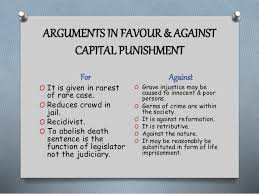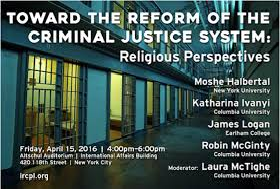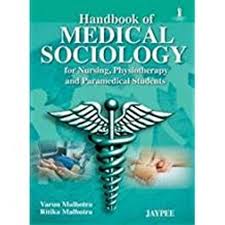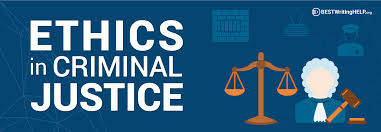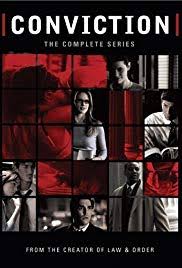
Law and conviction
Law and conviction
Order Instructions:
Need by 03/14/2016 4PM
•Address the following in 1,000–1,250 words: ?Read and brief the following cases: ¦Edwards v. South Carolina, 372 U.S. 229 (1963)
¦Adderley v. Florida, 385 U.S. 39 (1966)
¦U.S. v. Wise, 221 F.3d 140 (5th Cir. 2000)
¦U.S. v. Bailey, 444 U.S. 394 (1980)
?Your case brief should follow the format below: ¦Title: Title of the selected case
¦Facts: Summary of the events, court timeline, evidence, and so forth
¦Issues: Issues that were present in this case
¦Decisions: The court’s decision and the conclusion to the case
¦Reasoning: The rationale behind the final decision
¦Dissenting opinions: Any dissenting opinions, and an explanation of what they were and why they were raised
?Define disorderly conduct. Explain why the protest of one group was upheld while the other was not.
Two angry students sent e-mails from Texas to government agencies, such as the FBI in California, U.S. Customs in New York, the ATF, the Secret Service, and the Correspondence Office of the President. The e-mails contained threats to blow up a building in protest over U.S. involvement in several controversial international issues. The students were arrested and charged with threats to use weapons of mass destruction. A search of the students’ homes and dormitories did not reveal any bomb making materials.
•Will the government be successful and obtain a conviction? Explain your answer.
Inmate Grady was working during his shift on the landscape detail at a very large camp with no fences. He and some other prisoners had hidden some homemade moonshine under a rock. Inmate Grady drank the little bit of moonshine that was left. During inmate count, Officer Giles discovers that inmate Grady is missing. A search ensues, and the officers find inmate Grady down the street from the camp asleep under a tree. Inmate Grady argues that he got drunk and lost and could not find his way back to the dormitory.
•What charges can be brought against inmate Grady? Explain in detail.
SAMPLE ANSWER
Title
In this paper, the case by the title United States v. Bailey 444 U.S. 394 (1980) will be addressed by exploring more information such as the facts, decisions, and opinions concerning the case (Swaim, 2014). The respondents, in this case, were indicted for having escaped the jail in District of Columbia thus violating 18 U.S.C. 751 (a).
Summary of the events, court timeline, evidence,
The law is used in governing of escape from the prisons commonly known as the federal custody. The respondents, in this case, were the walker, Cooley, and Bailey (Swaim, 2014). They had crawled out of the federal prisons and escaped through the window. The three respondents had been at large for about three months after escaping the prison but were recaptured and charged with the violation of the law. The respondents gave some of their reasons as to why they had escaped the hospital by highlighting horrible living conditions, threats of murder or beatings and also frequent cases of fires as some of the major reasons (Yu, 2014). The evidence provided by the defendants in the case proves that there were instances where the prisoners were beaten and threatened with death. The prison conditions are said to have adduced duress. The jury of instructions of the duress was not submitted to the trial court. The convictions were thus reversed by the court of appeal due to improper preclusion of the considered respondent’s juries. Adducing the evidence to the prison’s events and conditions made them give reasons that necessitated their escape (Swaim, 2014).
Issues
The main issue, in this case, was whether there was enough evidence that could be used for constituting duress during the submission of the jury. The trial court had demanded that the defendants provide sufficient proof that they were ready to surrender as an attempt. The attempt to surrender is said to be after escaping and freeing themselves from the described conditions. The court held that the prisoners were indicted for escaping the prison and not the failure to surrender after fleeing themselves from custody (Webb, 2014). Escaping from the federal custody was the issue presented as it’s an offense to leave and fail to come back after initial departure from prison.
Decision and conclusion to the case
There were decisions made and ruling that was given by the court after the presentation of the issues concerning the case between United States v. Bailey (Webb, 2014). The criminal conduct was excused by the duress as the actor was under threat of imminent death which is unlawful in nature. The risk of getting serious bodily harm and other reasons led them to violate the literal terms as per the criminal law. The court of appeal decision and ruling was reversed on the basis that the respondents failed to submit enough evidence required by the court. The defenses necessary to the juries and also the duress did not meet the sufficient evidence to support themselves fully (Braithewaite, 2013). The proper instruction of the juries had occurred during the ruling of the court on the case.
The rationale behind the final decision
When the respondents had failed to provide the sufficient evidence required in court to rule the case in their favor. By the law, the court decided that the defense had failed to provide the necessary information as support for the duress. The failure of the defense to come back to the prison could not be seen as the inability to claim the necessity for escape entirely (Braithewaite, 2013). They could have avoided returning to the prisons so as not to undergo the same atrocities they had faced previously. The failure to return was to be investigated and decided by the jury. The convictions were reversed by the appellate court. The jury considerations of the evidence provided by the respondent had been precluded improperly.
Dissenting opinions
The modern cases in court usually blur the line between necessity and duress. When one acts under some conditions that cannot be tolerated or threats, one can claim duress of the act they commit leading to the violation of the law (Braithewaite, 2013). The act or criminal action may have prevented more harm and serious implications that necessitate the one to go ahead and do some actions due to inability to cope or resist. The defense of the duress failed when there was a better alternative to undertaking rather than commit the crime while trying to escape threatened harm. In this case, breaking the law should not be used as the defense for the criminal actions. In the case of the USA vs. Bailey, the defense is supposed to offer the initial defense for escaping (Swaim, 2014). When the initial duress element is subsided, more sufficient and present evidence have to be provided again.
Title Edwards vs. South Calorina(1963)
Facts
In this case, which occurred in the South Carolina of USA, there were protest demonstrations by the African-Americans. The protests were against the government offices by compelling them to end discriminations and fully restore the citizens’ privileges(Webb,2014). The protestors were 187 in number while the case was handled by the Supreme Court, 1963, 2011.
Issues
Breach of peace was the charge imposed on the protestors after the incident had occurred. Based on the 14 amendments to the law process, they went on to appeal the conviction imposed on them (Swaim, 2014). The defendants believe that the court does not have sufficient evidence to convict them of breach of peace.
Decision
The initial trial in the court led conviction of the participants in the protests where they also attracted some sentence. The convicted faced up to $100 fine for 30 days or $10 penalty fines in 5 days. The convictions were however reversed Mr. Stewarts, who like the appeal judge for the case (Swaim, 2014). Mr. Justice thus had a dissenting opinion regarding the reversed convictions.
Reasoning
The basis of convictions as the original charges leveled against the protestors which are the breach of peace. Judge Stewart made a review of some 17 cases to make the decision. He came up with the ruling that the charge did not warrant a conviction due to insufficient evidence (Webb, 2014). In this case, the prosecution lacked enough evidence to support the conviction.
Dissenting opinions
Justice Clark gave a dissenting opinion based on that the government offices were in session, and also the city manager took the action of arresting the protestors to avoid the unnecessary chaos. In this case, Justice Clark affirmed the convictions. He was of the opinion that rage would be evoked on the citizens once the riots were uncontrollable.
Title Wise Vs USA (2000)
Facts
In this case, John Cain reported a case to the FBI by his member’s actions within the Texas Republic. Cain prepared some evidence of the terrorist behavior since March-July 1998.The compiled evidence included the threat to harm others, developing threats to the government through emails by Oliver Dean Emigh and also Johnie Wise.
Issues
Sending of the threatening messages which occurred through emails is the main issues in this case. The emails were then sent to the government officials. Cain as able to direct the FBI to the prepared plan by Wise (Yu, 2014).The decision by Wise regarding the threatening messages was reported to Sharkey, the agent. The involvement of the agent occurred when the action plans by Wise to hurt somebody was reported to him.
Decisions
Counts 5 and 6 were used in the conviction of Grebe and Wise during the original trial. Emigh was acquitted on all counts that were leveled against him during the case (Braithewaite, 2013). Wise was of the thought that the court had insufficient evidence to carry on with the conviction. Wise appealed as he believed that the court was provided with inappropriate instructions. The poor conduct by the case prosecutor was the main basis of argument.
Reasoning
The court of appeal agrees and credits the evidence as enough to convict Grebe and Wise (Yu,2014). The Conspiracy to commit crimes against the government of USA was the charge.
Dissenting opinion
The case had no dissenting opinions presented during all its stages.
Title Florida (USA) vs. Adderley
In this case, 32 students were arrested and convictions leveled against based on the charge, trespass with mischievous intent (Yu, 2014). The protest had occurred outside the government custody in Florida.
Issues
The main issues raised in this case were right to petition, fourteenth amendment and also freedom of assembly. The issues were the due process as the freedom of speech factors was also raised.
Decisions
The law interpretation and enforcement statue in the statue provided the court with sufficient evidence to prove the defendants guilty of their charges(Braithewaite,2013). The court was thus convicted Adderly and other 31 students. Judge Black upheld the convictions by the court during the appeal process.
Reasoning
The Edwards vs USA case was referenced by Adderley during the petition on the basis of protests. However, the basis of arrest for the both cases was not similar in nature to the breach of peace and trespass laws differ significantly (Swaim, 2014). The protests, in this case, did not involve the public property as compared to the referenced case. Adderley thus had insufficient reasons to win during the petition.
Dissenting opinions
Judges Fortes and Douglas gave their dissenting opinions that the convictions were unjust (Braithewaite, 2013). They justified the protest by regarding the jail property as common ground to trigger the actions by the students.
The disorderly act will constitute of the unruly acts that attract the criminal charges depending on the law statues of a given state or country (Larkin, 2013). Behaving in a disruptive manner could lead to charges regarded as disorderly conduct. The interpretation of the disorderly act makes the court determine whether to uphold the protests of one group or another. The type of evidence provided that is beyond any reasonable doubt could be used in setting up a group if found to have violated any law (Braithewaite, 2013). In this case, the determination of the extent of violations and reasons for protests makes one group to be upheld and the other not.
Sufficiency of evidence could be used by the government to convict the two students with the bomb threats. In the case where the weapon is not found, the witness credibility could depend upon during the conviction of the students in questions. If the witness is by any chance believed, the defendant could in such a case be convicted. It will not be easy for the government to convict the students as the prosecution bears a big burden to proof that the students are guilty (Swaim, 2014). The students can only be found to be guilty if the evidence is presented to the jury. The prosecution is only relying on the email to convict the students and bind them in the trial court. In this case, the government might only be successful to convict the students if there is sufficient evidence beyond any reasonable doubt.
More punishment can be handed to a prisoner who is found to have taken alcohol. The correctional facility has to confirm if he is guilty. It was a capital punishment when the inmate was found to have been drunk. The prisoner could be convicted in a court of law as it is illegal to be found in possession of products such as alcohol (Larkin,2013). The sufficient evidence will be used to convict the inmate where a punishment will be levied on him. Confinement is one of the punishments that the inmate will face and also forfeiture of benefits and allowances might also come his way.
References
Braithwaite, J. (2013). Inequality, Crime and Public Policy (Routledge Revivals). Routledge.
Larkin Jr, P. J. (2013). Stops and Frisks, Race, and the Constitution. Geo. Wash. L. Rev., 82, 1.
Swaim, J. A. (2014). Bailey v. United States: the Supreme Court’s Futile Attempt at Setting Boundaries around a Borderless Rule. Loy. L. Rev., 60, 355.
Webb, E. B. (2014). Aiding and Abetting Section 924 (C) Offenses: An Analysis of Rosemond v. United States’ Withdrawal Rule. Geo. Mason L. Rev., 22, 1.
Yu, B. (2014). Criminal Ambiguity: Redefining the Clean Water Act’s Mens Rea Requirements. Seton Hall Cir. Rev., 11, 327.
We can write this or a similar paper for you! Simply fill the order form!




